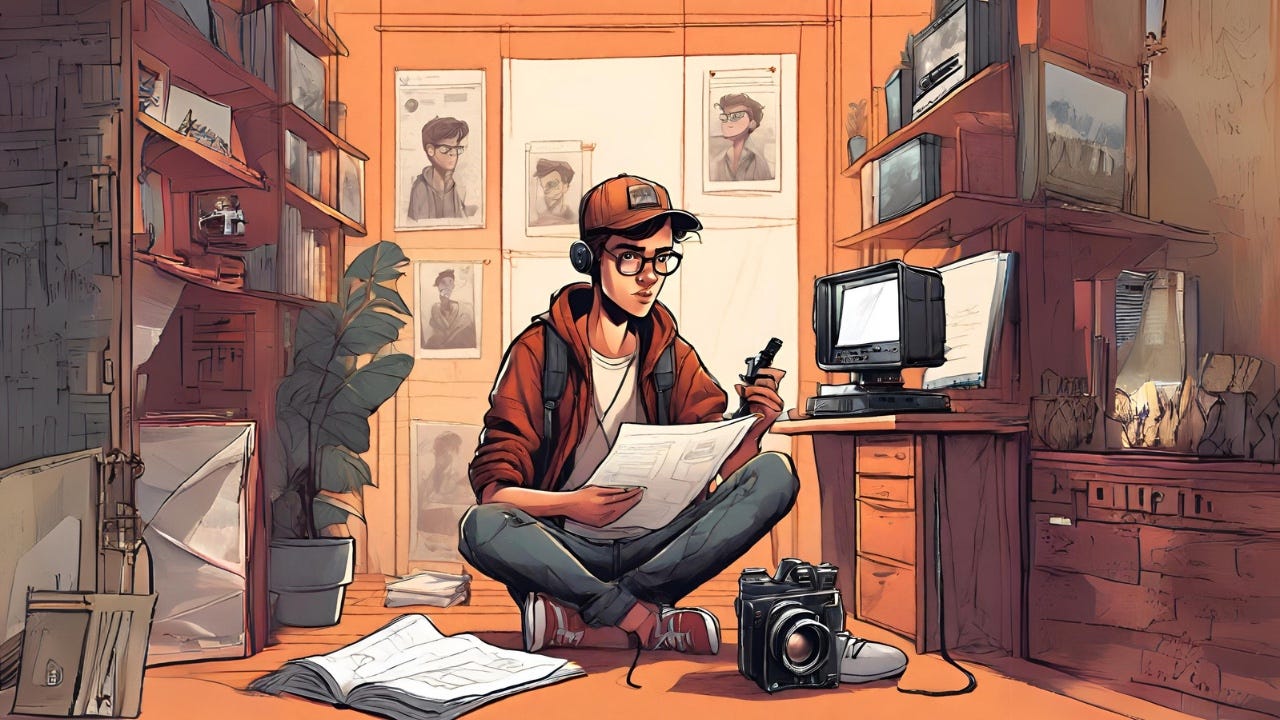
Discover the Best Book Recommendations Today
Finding great books can seem hard, but with the right help, you can find your next favorite. A good website for book recommendations can guide
The Official Website of E.B. Brown
Adapting a novel’s inner monologues into film poses a unique challenge: how to convey the intimate, nuanced inner thoughts of characters without relying solely on the written word. Unlike novels, which provide direct access to a character’s mind through text, films must translate these internal worlds into a multisensory experience. This requires directors to creatively balance storytelling techniques that engage both the intellect and emotions of the audience. Here’s how filmmakers masterfully bring introspection to life on screen, ensuring the essence of a literary work remains intact.

Voice-over narration is one of the most straightforward ways to communicate a character’s internal thoughts, mimicking the literary style of first-person introspection. This technique is particularly effective in adaptations where the internal monologue is central to the narrative.
Example: Fight Club
David Fincher uses Edward Norton’s voice-over to immerse the audience in the protagonist’s inner turmoil, disillusionment, and existential musings. The narration reflects the novel's tone, ensuring a faithful translation of its psychological depth.
Example: The Great Gatsby
Baz Luhrmann’s adaptation relies heavily on Nick Carraway’s voice-over, preserving the reflective and poetic nature of Fitzgerald’s prose.
Advantages:
Challenges:
When words fall short, visuals step in to evoke emotions and ideas. Directors use color schemes, framing, and cinematography to represent a character’s internal state.
Example: Revolutionary Road
In this tale of suburban discontent, director Sam Mendes isolates the characters in vast, empty spaces, visually mirroring their emotional isolation and unfulfilled dreams.
Example: Joker
Todd Phillips employs a muted, gritty color palette and claustrophobic framing to reflect Arthur Fleck’s descent into madness.
Why It Works:
Talented actors can convey layers of meaning through nuanced performances, eliminating the need for explicit dialogue. Body language, facial expressions, and even stillness become tools for storytelling.
Example: Pride and Prejudice
Keira Knightley’s portrayal of Elizabeth Bennet relies heavily on subtle shifts in expression and posture to convey her growing affection and internal conflict regarding Mr. Darcy.
Example: Lost in Translation
Sofia Coppola captures moments of silence and longing between the lead characters, letting their gazes and body language speak volumes about their unspoken connection.
Strengths:
Soundscapes, music, and even silence can evoke a character’s psychological state. The auditory dimension allows filmmakers to immerse audiences in the character's emotional and mental experiences.
Example: A Beautiful Mind
Ron Howard uses layered voices and auditory distortions to simulate John Nash’s schizophrenia, letting viewers experience his internal battles firsthand.
Example: Requiem for a Dream
Darren Aronofsky’s use of rhythmic, repetitive sounds underscores the obsessive and spiraling mental states of the characters.
Why It Resonates:
Surreal visuals, dream sequences, and flashbacks enable filmmakers to explore a character's subconscious, portraying emotions and thoughts that defy traditional narrative structures.
Example: Eternal Sunshine of the Spotless Mind
Michel Gondry uses fragmented, dreamlike visuals to represent Joel’s fading memories, giving the audience an intimate glimpse into his regrets and desires.
Example: Black Swan
Darren Aronofsky blends hallucinations with reality to depict Nina’s mental unraveling, creating a haunting representation of perfectionism and self-doubt.
Impact:
Through innovative editing, directors can mimic the flow of consciousness, blending past and present, reality and memory. Montages and intercuts compress time, capturing the complexity of inner experiences.
Example: The Tree of Life
Terrence Malick’s meditative editing style juxtaposes childhood memories with existential musings, creating a poetic stream of consciousness that mirrors the introspection of its characters.
Example: Slumdog Millionaire
Danny Boyle uses flashbacks interwoven with the present to reveal the protagonist’s motivations and resilience, crafting a rich tapestry of memory and emotion.
Why It Matters:
Some directors eschew explicit inner monologues, opting instead to reveal a character’s inner life through their actions, choices, and relationships. This approach relies on subtlety and viewer interpretation.
Example: There Will Be Blood
Paul Thomas Anderson avoids revealing Daniel Plainview’s thoughts directly, instead portraying his greed and moral decay through his relentless actions and interactions.
Example: The Revenant
Alejandro G. Iñárritu conveys Hugh Glass’s emotional journey through grueling survival scenes, with minimal dialogue.
Strengths:
Adapting a novel’s introspection to film is an art form that requires a delicate balance of creativity and technique. Whether through voice-over narration, visual symbolism, or surreal editing, filmmakers bring characters’ inner worlds to life in ways that resonate emotionally and intellectually. While novels offer direct access to a character’s mind, films compensate with multisensory experiences, creating a dynamic interplay between visual, auditory, and narrative elements.
For audiences, this means the opportunity to not only observe but feel a character’s journey—connecting with their struggles, triumphs, and introspections on a deeply visceral level. By mastering these techniques, filmmakers ensure that the essence of literary introspection is not only preserved but elevated in the cinematic medium.
Q1: What are common techniques filmmakers use to convey inner monologues?
Voice-over narration, visual symbolism, body language, sound design, and editing are key methods used to translate a character's introspection into film.
Q2: Why is visual symbolism effective in conveying inner thoughts?
Visual symbolism allows filmmakers to suggest emotions and ideas through imagery, engaging the audience on a subconscious level.
Q3: How do surreal techniques enhance storytelling?
Surreal visuals and nonlinear narratives allow filmmakers to represent abstract or complex emotions, offering a deeper exploration of a character’s mind.
Q4: What role does sound design play in portraying introspection?
Sound design immerses audiences in a character’s psychological state, using music, soundscapes, and silence to evoke emotions and thoughts.
Q5: Why do some directors avoid explicit inner monologues?
By focusing on actions and relationships, directors encourage viewers to interpret a character’s inner life, creating a more engaging and layered experience.

Finding great books can seem hard, but with the right help, you can find your next favorite. A good website for book recommendations can guide

Connecting with fellow book lovers can open up new worlds and build lasting friendships. A local Reading Community offers a sense of belonging and enriches

The rise of digital publishing has made E-book Platform solutions more popular. With many online e-book platforms out there, picking the right one is key.